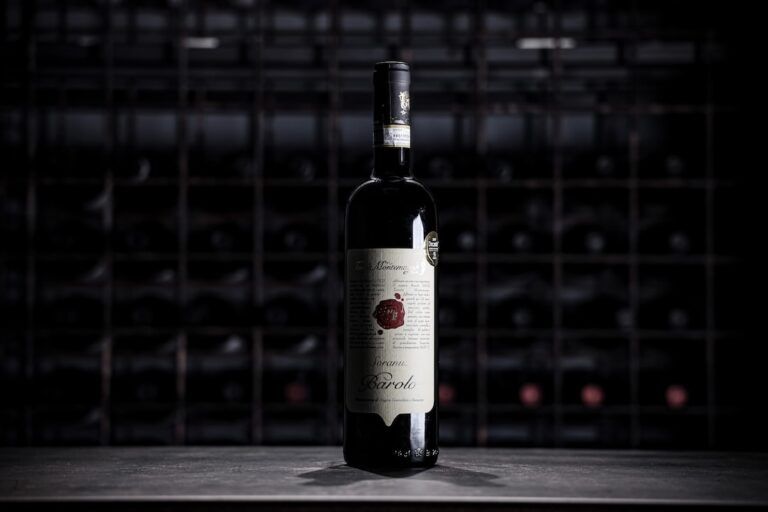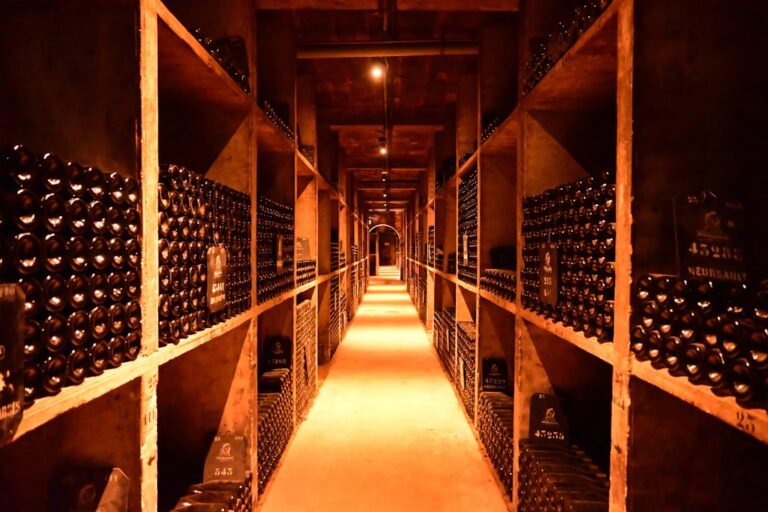Rosé: A pink wine that can be made from various grape varieties, offering a range of flavors from fruity to dry.
Rosé wine has a long and storied history, dating back thousands of years. It is believed to have originated in ancient Greece, where the Greeks would ferment red grapes for a short period of time to produce a light pink wine. Over the centuries, rosé wine has gained popularity around the world and has become a favorite among wine enthusiasts.
One of the reasons why rosé wine is so popular is its versatility. It can be enjoyed on its own as a refreshing and light drink, or it can be paired with a wide range of foods. Its vibrant pink color and delicate flavors make it an ideal choice for warm weather and outdoor gatherings.
The Making of Rosé Wine: From Grape to Glass
The process of making rosé wine is similar to that of red and white wines, but with a few key differences. The grapes used to make rosé wine are typically red grapes, but they are crushed and left in contact with the skins for a much shorter period of time than when making red wine. This allows for less color and tannins to be extracted from the skins, resulting in a lighter and more delicate wine.
After the grapes are crushed, the juice is separated from the skins and fermented in stainless steel tanks or oak barrels. The fermentation process can take anywhere from a few weeks to several months, depending on the desired flavor profile of the wine. Once fermentation is complete, the wine is aged for a short period of time before being bottled.
The Grape Varieties Used in Rosé Wine Production
There are many different grape varieties that can be used to make rosé wine, but some are more commonly used than others. Grenache, Syrah, and Mourvèdre are three popular grape varieties used in rosé production in France’s Provence region. These grapes are known for their vibrant flavors and ability to produce wines with a beautiful pink hue.
In addition to these traditional grape varieties, winemakers around the world are experimenting with different grape varieties to create unique and interesting rosé wines. For example, in California’s Napa Valley, winemakers are using Cabernet Sauvignon and Merlot grapes to produce rich and complex rosé wines.
The grape variety used in rosé wine production can have a significant impact on the flavor profile of the wine. Grenache grapes, for example, tend to produce wines with fruity flavors of strawberry and raspberry, while Syrah grapes can add a spicy and peppery note to the wine.
The Flavor Profile of Rosé Wine: From Fruity to Dry
Rosé wines can vary widely in terms of their flavor profile, ranging from fruity and sweet to dry and crisp. The flavor of the wine is influenced by several factors, including the grape variety used, the winemaking process, and the region where the wine is produced.
Fruity rosé wines are often made from grapes that have high sugar content, resulting in a sweeter wine. These wines are typically light-bodied and have flavors of ripe berries and tropical fruits. They are often enjoyed as a refreshing drink on a hot summer day.
On the other end of the spectrum, dry rosé wines are made from grapes that have lower sugar content. These wines are typically more acidic and have flavors of citrus fruits and herbs. They pair well with a wide range of foods, including seafood, salads, and grilled vegetables.
The Different Shades of Rosé Wine: From Pale Pink to Deep Ruby
Rosé wines come in a wide range of shades, from pale pink to deep ruby. The shade of the wine can indicate its flavor profile and intensity.
Pale pink rosé wines are typically light-bodied and have delicate flavors of strawberries and flowers. They are often made from grapes that have been lightly pressed and fermented for a short period of time. These wines are perfect for sipping on their own or pairing with light appetizers.
Medium pink rosé wines have a slightly deeper color and more pronounced flavors. They are often made from grapes that have been pressed and fermented for a longer period of time, resulting in a wine with more body and complexity. These wines pair well with a wide range of foods, including grilled meats and pasta dishes.
Deep ruby rosé wines are the darkest in color and have the most intense flavors. They are often made from grapes that have been pressed and fermented for an extended period of time, resulting in a wine with more tannins and structure. These wines pair well with rich and flavorful dishes, such as roasted meats and stews.
The Best Food Pairings for Rosé Wine: From Seafood to Desserts

Rosé wine is incredibly versatile when it comes to food pairings. Its acidity and fruit-forward flavors make it an ideal choice for a wide range of dishes.
For seafood lovers, rosé wine pairs particularly well with shellfish, such as oysters, shrimp, and crab. The wine’s acidity helps to cut through the richness of the seafood, while its fruity flavors complement the delicate flavors of the shellfish.
Rosé wine also pairs well with light salads and vegetable dishes. Its crispness and refreshing flavors can help to balance out the flavors of fresh greens and vegetables.
When it comes to desserts, rosé wine can be a surprising and delightful pairing. Its sweetness can complement the flavors of fruity desserts, such as strawberry shortcake or peach cobbler.
The Health Benefits of Drinking Rosé Wine in Moderation
Moderate consumption of wine has been associated with several health benefits. Rosé wine, in particular, has been found to have some unique health benefits.
One of the key health benefits of rosé wine is its high antioxidant content. Antioxidants help to protect the body against free radicals, which can cause damage to cells and contribute to the development of chronic diseases.
Rosé wine has also been found to have anti-inflammatory properties. Inflammation is a natural response by the body to injury or infection, but chronic inflammation can contribute to the development of diseases such as heart disease and cancer. The antioxidants in rosé wine can help to reduce inflammation and promote overall health.
In addition, moderate consumption of rosé wine has been associated with a reduced risk of heart disease. The alcohol and antioxidants in wine can help to increase levels of HDL cholesterol (the “good” cholesterol) and reduce levels of LDL cholesterol (the “bad” cholesterol), which can help to protect against heart disease.
The Popularity of Rosé Wine: A Global Phenomenon
In recent years, rosé wine has experienced a surge in popularity around the world. It has become a global phenomenon, with consumers in countries such as the United States, France, and the United Kingdom embracing this pink delight.
There are several factors that have contributed to the rise in popularity of rosé wine. One of the key factors is its versatility. Rosé wine can be enjoyed on its own as a refreshing drink, or it can be paired with a wide range of foods. Its vibrant pink color and delicate flavors make it an ideal choice for warm weather and outdoor gatherings.
Another factor that has contributed to the popularity of rosé wine is its accessibility. Unlike some other types of wine, rosé is often more affordable and widely available. This makes it an attractive option for both casual wine drinkers and enthusiasts alike.
The Best Rosé Wine Regions in the World: From Provence to Napa Valley
There are several regions around the world that are known for producing exceptional rosé wines. One of the most famous regions is Provence in France. Provence is known for its pale pink rosé wines, which are made from a blend of grape varieties including Grenache, Syrah, and Mourvèdre. These wines are often light-bodied and have delicate flavors of strawberries and flowers.
Another region that is gaining recognition for its rosé wines is California’s Napa Valley. Napa Valley is known for producing high-quality wines, and its rosé wines are no exception. These wines are often made from grape varieties such as Cabernet Sauvignon and Merlot, resulting in rich and complex flavors.
Other regions that are known for producing exceptional rosé wines include Tuscany in Italy, Rioja in Spain, and the Finger Lakes region in New York. Each of these regions has its own unique characteristics and flavor profiles, making them worth exploring for any rosé wine enthusiast.
The Future of Rosé Wine: Trends and Innovations in the Industry
The future of rosé wine looks bright, with several trends and innovations emerging in the industry. One of the trends that has gained traction in recent years is the production of sparkling rosé wines. These wines combine the refreshing flavors of rosé with the effervescence of sparkling wine, resulting in a delightful and celebratory drink.
Another trend that is gaining popularity is the production of organic and biodynamic rosé wines. Consumers are becoming more conscious of their environmental impact and are seeking out wines that are made using sustainable practices. Organic and biodynamic rosé wines are made without the use of synthetic pesticides or fertilizers, resulting in a wine that is not only delicious but also better for the planet.
In terms of innovations, winemakers are experimenting with different grape varieties and winemaking techniques to create unique and interesting rosé wines. For example, some winemakers are using carbonic maceration, a technique commonly used in Beaujolais, to produce rosé wines with vibrant fruit flavors and a light body.
Overall, the future of rosé wine looks promising, with new and exciting developments on the horizon. Whether you prefer a pale pink Provence rosé or a deep ruby Napa Valley rosé, there is sure to be a wine to suit your taste. So raise a glass and toast to the pink delight that is rosé wine. Cheers!
If you’re interested in learning more about the world of rosé wines, you might want to check out this article on Arrow and Branch Wines. This boutique winery located in Napa Valley offers exclusive tastings and is known for producing some of the finest rosé wines. From fruity to dry, their rosés are made from various grape varieties, providing a range of flavors to suit every palate. Discover the elegance and sophistication of Arrow and Branch Wines by clicking here.
FAQs
What is rosé wine?
Rosé wine is a type of wine that has a pink color, which is achieved by allowing the grape skins to come into contact with the grape juice for a short period of time. This process is called maceration.
What grape varieties are used to make rosé wine?
Rosé wine can be made from various grape varieties, including Grenache, Syrah, Mourvèdre, Pinot Noir, Sangiovese, and Zinfandel, among others.
What flavors can be found in rosé wine?
Rosé wine can offer a range of flavors, from fruity to dry. Fruity flavors can include strawberry, raspberry, and watermelon, while dry rosé can have a more herbal or mineral taste.
What food pairs well with rosé wine?
Rosé wine pairs well with a variety of foods, including seafood, salads, grilled vegetables, and light pasta dishes. It can also be a great accompaniment to spicy foods.
What is the ideal serving temperature for rosé wine?
The ideal serving temperature for rosé wine is between 45-55°F (7-13°C). This temperature range allows the wine to showcase its flavors and aromas without being too cold or too warm.
How long can rosé wine be stored?
Rosé wine is best consumed within 1-2 years of its vintage date. However, some high-quality rosé wines can be aged for up to 5 years. It is important to store rosé wine in a cool, dark place to preserve its quality.







